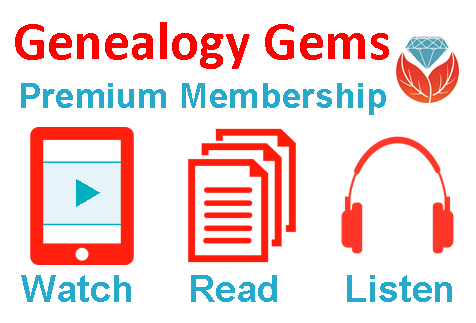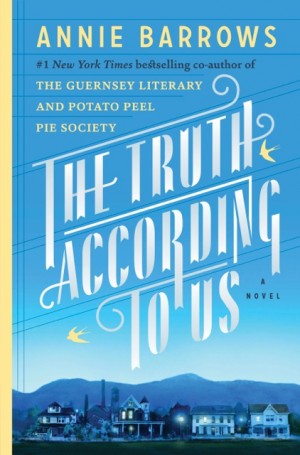AncestryDNA Review and Breaking News! Updates Launched
“This is really the first time a DNA testing company has so fully integrated genetics and genealogy. We can now find cousins in the database who do not share our particular genetics, but who do share some of the genetics of our common ancestor. This is huge.” -Diane Southard, Your DNA Guide
I blogged a couple of weeks ago about some changes taking place over at AncestryDNA. You will recall that they are planning to slash your match list
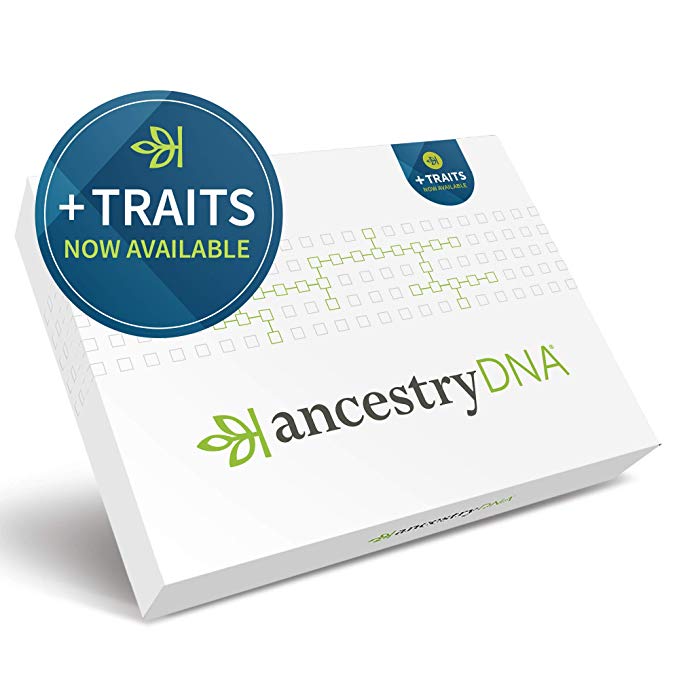 to allow only “invited guests” to your personal DNA party. (Read that post to be reminded why this is a good thing.)
to allow only “invited guests” to your personal DNA party. (Read that post to be reminded why this is a good thing.)
Ancestry has officially announced the launch of this feature update and reports that on average users will see an 80% reduction in the number of matches shown. I had a chance to look at the new site before it launched and one of my favorite features is the question mark that appears next to your match. Clicking on the question mark on your match page will bring up a menu of references to help you better understand the inner workings of matching at Ancestry, including those confidence levels that are a part of every relationship prediction. In this table below you can see that ancestry has tried to give you some fairly solid guidelines by which to assess the quality of your matches. You will want to focus on those matches with a confidence score of “High” or above to have the best chance of genealogical success. 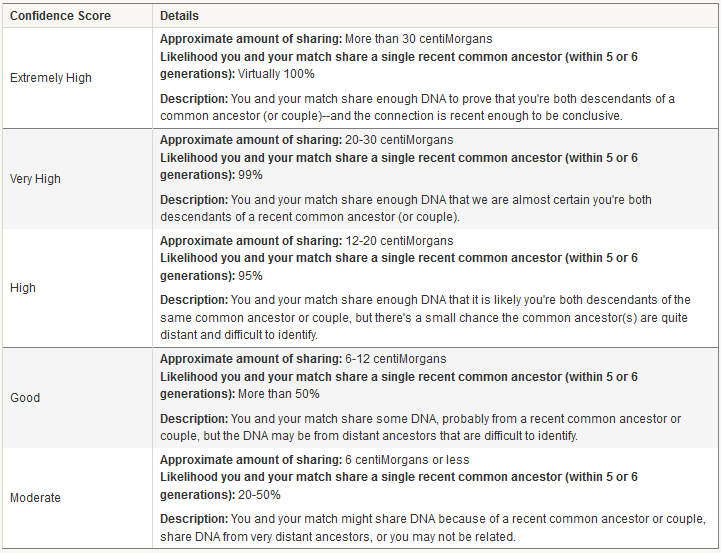 But an update to the matching feature is only the beginning of the new features at AncestryDNA
But an update to the matching feature is only the beginning of the new features at AncestryDNA. Today Ancestry announced “DNA Circles,” a tool that helps you identify others who share common ancestors with you. The new “DNA Circles” feature has the potential to impact the way you do genetic genealogy at Ancestry. Here’s why: Autosomal DNA (the kind that Ancestry is testing) has a spotty inheritance pattern. On average we only have half of the DNA of each of our parents, only 25% of our grandparents, only 12.5% of our great grandparents and so on. This means that AncestryDNA and its competitors (Family Tree DNA and 23andMe) are only able to genetically identify 50% of your genetic 4th cousins. This means that there could be 50% MORE people in these databases that you are actually related to, people that should have been invited to your DNA party, but didn’t have a ticket. Now with DNA Circles, there is a metaphorical “after-party.” After parties are “hosted” by one of your relatives. Ancestry searches your pedigree and that of your matches back 7 generations looking for suitable hosts. An ancestor qualifies as a host if they have two or more descendants who hold an invitation. At this after-party you can meet some of these long lost cousins that, while related to you, lost their ticket to your DNA party. After-party invitations are provided to those who meet three very important qualifications:
- They have their DNA attached to their PUBLIC family tree.
- AND that PUBLIC family tree has the name of the hosting ancestor on it.
- AND this person shares DNA with at least one other person who also meets the above two criteria.
Here’s an example. Below is an image of the new AncestryDNA home page. You can see I am a part of two DNA Circles (some of you will be much more popular and invited to several after-parties. For me–just the two for now). Let’s take a closer look at my DNA Circle hosted by my paternal 5th great grandfather Minus Griggs (who knew the guy liked parties?!).  Clicking on the DNA circle brings up this page where there are three things I want to show you:
Clicking on the DNA circle brings up this page where there are three things I want to show you: 
- This is your relationship to the host.
- This is a list of the individuals who have passed the three criteria listed above and have been invited to this after-party.
- This is the innovative part. You see that the first two matches (after me–I am listed first) have only “Tree Match” in this column. This means that these two people, both descendants of our host, Minus Griggs, didn’t ever appear on my DNA match list. We do not share enough DNA to be considered genetic relatives. However, the third member of the circle has the “DNA Match” designation, meaning that this match DOES appear on my match page. In fact, this is my ONLY DNA match in the circle (there are three others not shown here). That means that this DNA circle has connected me to FIVE other cousins. All because I share DNA and genealogy with the third member of this circle, and he shares DNA and genealogy with everyone else.
I can click on each circle member to see exactly how Ancestry THINKS we are related. This is my first opportunity to DOUBLE CHECK this relationship that Ancestry has handed me, to be sure that both my match and I really did receive tickets to the same after party.
Here is what that page looks like for me and one of my matches.
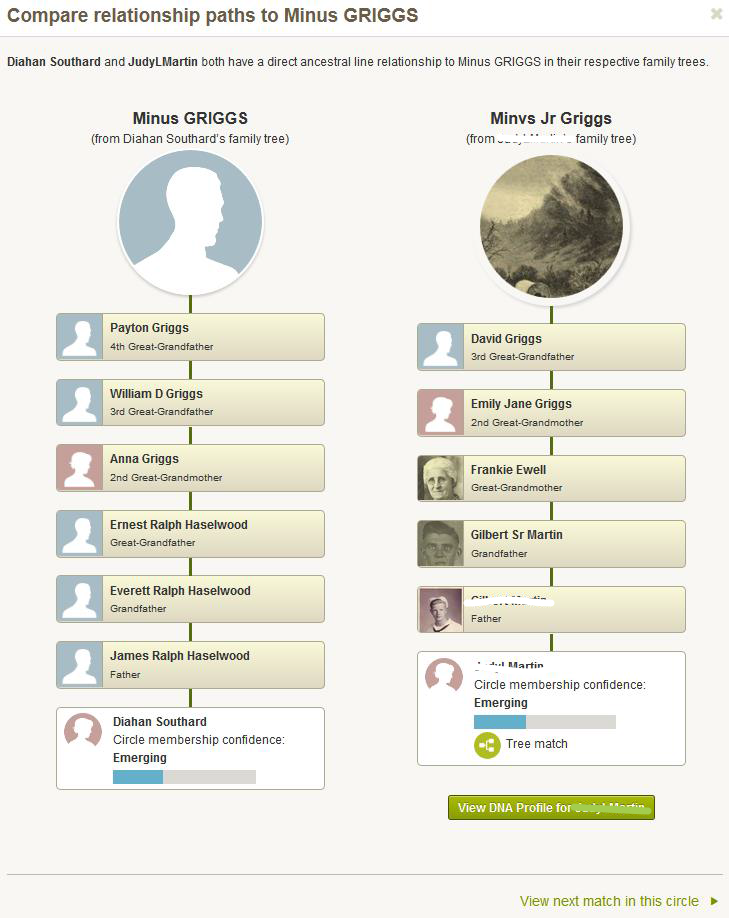 This is really the first time a DNA testing company has so fully integrated genetics and genealogy. We can now find cousins in the database who do not share our particular genetics, but who do share some of the genetics of our common ancestor. In my opinion, this is huge.
This is really the first time a DNA testing company has so fully integrated genetics and genealogy. We can now find cousins in the database who do not share our particular genetics, but who do share some of the genetics of our common ancestor. In my opinion, this is huge.
There is one catch, and it is going to be a big one for some of you. In order to see your DNA Circles, you have to be an Ancestry.com subscriber.
Even though I am excited about these changes, I can’t help but hope for just one step more. In order to identify these DNA Circles, Ancestry has identified pieces of DNA that can be fairly reliably assigned to a particular ancestor. There are likely others in the Ancestry database who have these pieces of DNA, we can call them partial tickets to the after-party, but who are lacking the second requirement: a pedigree documenting a relationship to that ancestor. I hope in the future the folks at Ancestry will honor those partial ticket holders, and allow them to the after-party, so we can sit around with our peanuts and pretzels and figure out how we are all related. Until then, I am going to enjoy the two after-parties hosted by my two generous ancestors.
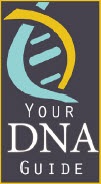 Ready to walk through the process of using DNA for your genealogy? Let me be your guide! Check out my quick
Ready to walk through the process of using DNA for your genealogy? Let me be your guide! Check out my quick  guides (left) Purchase each guide individually or pick up the bundle of all 4 for the best deal!
guides (left) Purchase each guide individually or pick up the bundle of all 4 for the best deal!
- Getting Started: Genetics for Genealogists;
- Y Chromosome DNA for Genealogists;
- Autosomal DNA for Genealogists; and
- NEW! Mitochondrial DNA for Genealogists.
Visit my website to learn about expert consultations with me. You’ll get customized guidance on which tests to order and how to maximize your results for your genealogy research.
Genealogy Gems Podcast Episode 199
The Genealogy Gems Podcast
Episode 199
with Lisa Louise Cooke
Click the player below to listen:

In this episode, Lisa celebrates Canada’s 150th anniversary with Claire Banton from Library and Archives Canada. You’ll also hear how Lisa will be marking another anniversary in 2017: the 10th year of this Genealogy Gems podcast.
More episode highlights:
- An inspiring follow-up email from Gay, whose YouTube discovery Lisa shared in episode 198, and a great conference tip from Barbara just in time for RootsTech.
- Genealogy Gems Book Club Guru Sunny Morton announces the new Book Club title.
- Your DNA Guide Diahan Southard shares thoughts about DNA testing with kids.
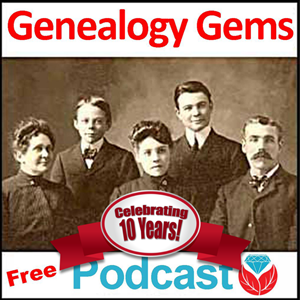 JOIN THE CELEBRATION! 10th ANNIVERSARY AND 200th EPISODE
JOIN THE CELEBRATION! 10th ANNIVERSARY AND 200th EPISODE
You’re invited to send in well-wishes and win a chance at a prize!
Email Lisa by January 31, 2017 at genealogygemspodcast @ gmail.com OR call her voicemail line at 925-272-4021.
Share your first name and where you live.
Share a memory of listening to this podcast, such as: When did you start listening? What’s one of your favorite things you’ve learned from this show?
Lisa will randomly select one response to receive a free year of Genealogy Gems Premium membership. Thanks for helping all of us here at Genealogy Gems celebrate 10 years of doing something we love!
NEWS: ROOTSTECH 2017
RootsTech will be held on February 8-11, 2017 in Salt Lake City, UT: learn more and register.
Genealogy Gems events at RootsTech
Lisa will be live-streaming FREE sessions the marked session via the free Periscope app. Get it in Apple’s App Store or Google Play. Sign up for a free account and follow Lisa Louise Cooke to tune in. Sign up for notifications in Periscope, and your phone will “ping” whenever Lisa starts streaming! Broadcasts stay in the Periscope app for 24 hours. Like and follow the Genealogy Gems Facebook page to hear about more streaming sessions!
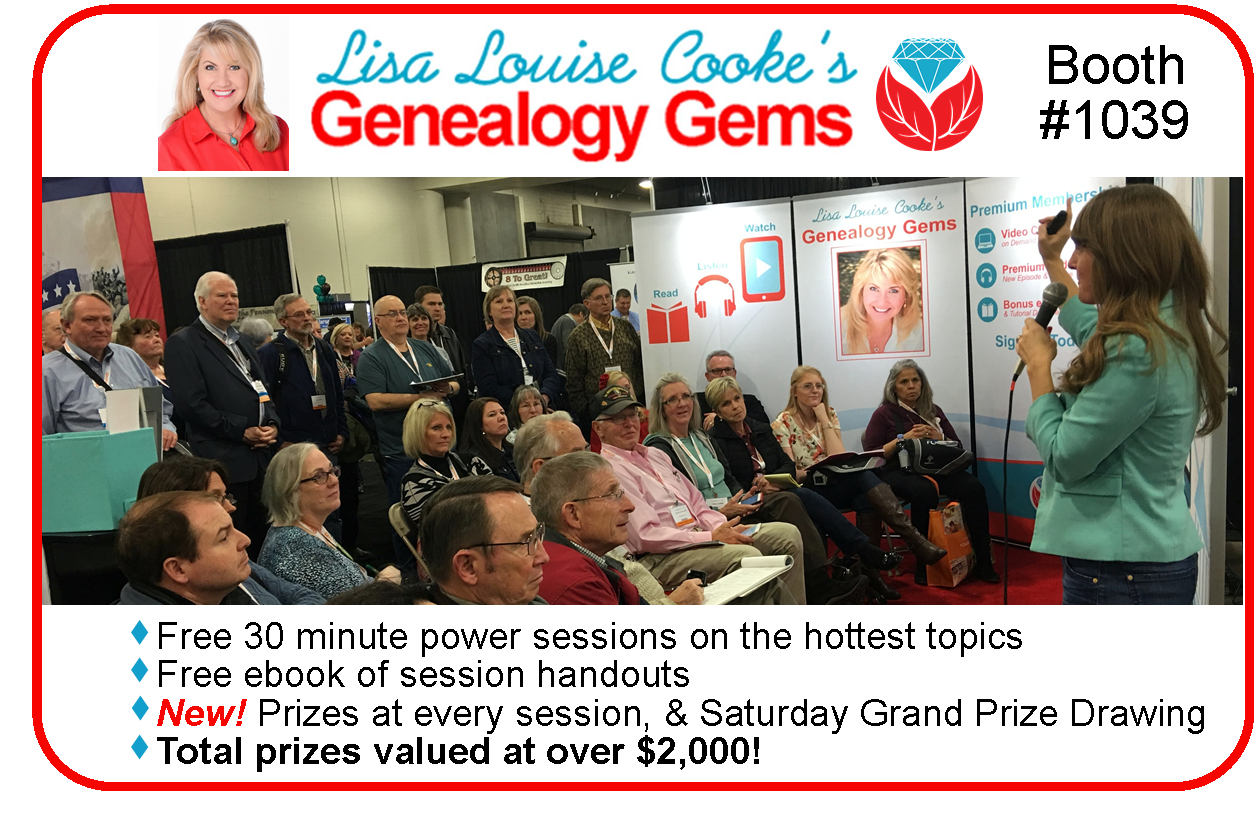

NEWS: FAMICITY KICK-STARTER
 Famicity is a free, private website for families to share pictures, videos, memories, family activities and the family tree. The company has been very successful in France where it was launched, and the founder is working to bring the new English platform to the United States. He’s launched a Kickstarter campaign to support their U.S. launch. Click here to support it.
Famicity is a free, private website for families to share pictures, videos, memories, family activities and the family tree. The company has been very successful in France where it was launched, and the founder is working to bring the new English platform to the United States. He’s launched a Kickstarter campaign to support their U.S. launch. Click here to support it.
BONUS CONTENT FOR GENEALOGY GEMS APP USERS
If you’re listening through the Genealogy Gems app, your bonus content for this episode is a tutorial on Feedly, an easy way to consume just the online content you want. The Genealogy Gems app is FREE in Google Play and is only $2.99 for Windows, iPhone and iPad users
Lisa Louise Cooke uses and recommends RootsMagic family history software. From within RootsMagic, you can search WebHints on FamilySearch.org, Findmypast.com and MyHeritage.com. Soon RootsMagic will also be able to search records and even sync your tree with Ancestry.com, too.
 Keep your family history research, photos, tree software files, videos and all other computer files safely backed up with Backblaze, the official cloud-based computer backup system for Lisa Louise Cooke’s Genealogy Gems. Learn more at http://www.backblaze.com/Lisa.
Keep your family history research, photos, tree software files, videos and all other computer files safely backed up with Backblaze, the official cloud-based computer backup system for Lisa Louise Cooke’s Genealogy Gems. Learn more at http://www.backblaze.com/Lisa.
 MAILBOX: YOUTUBE DISCOVERY FOLLOW-UP
MAILBOX: YOUTUBE DISCOVERY FOLLOW-UP
Remember the YouTube success story from Genealogy Gems Podcast episode 198? Gay as a young woman attended a dedication ceremony for the saline water treatment in Freeport, Texas?and with Lisa’s tips she found video footage on YouTube.
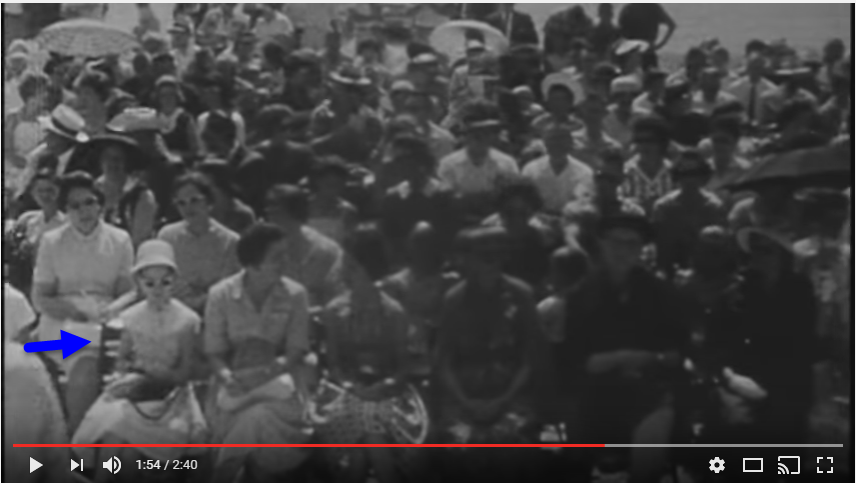
Gay wrote back to send us more about that, including this page from her diary that day and this news clipping. Check out the news clipping to see why that plant was so important, Pres. John F. Kennedy gave the dedication speech. (See what newspapers can tell you?!)
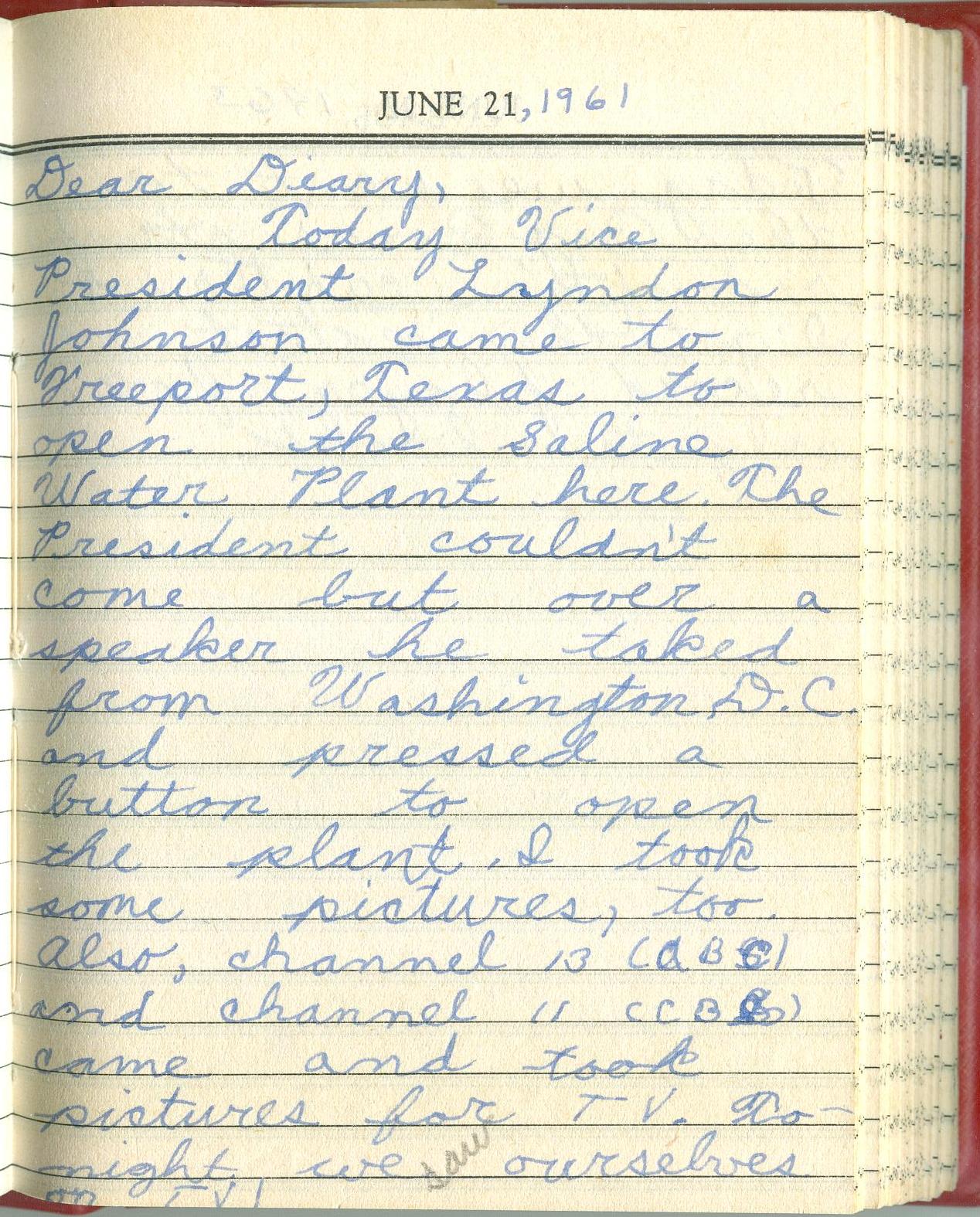
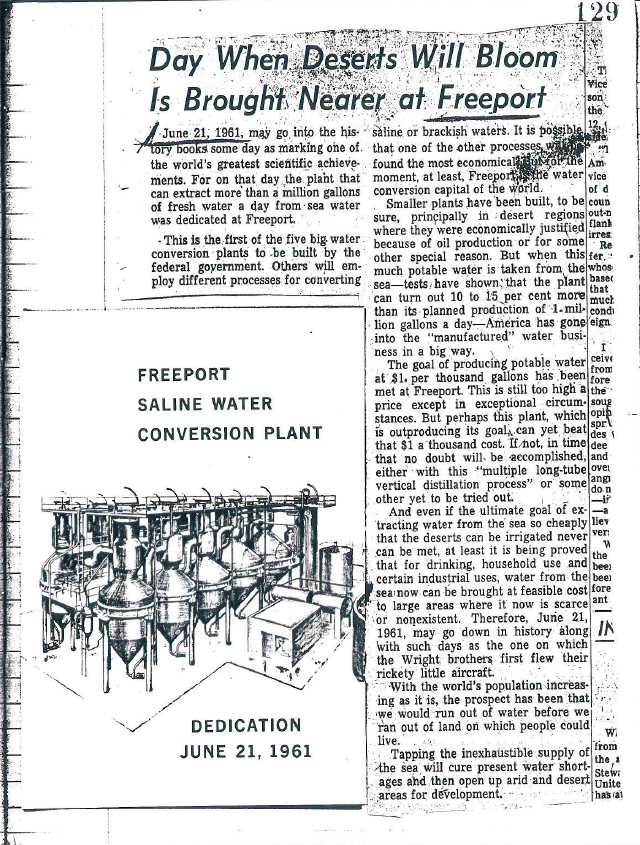
Find your own family history on YouTube. Click here to learn how or read an entire chapter on YouTube in Lisa Louise Cooke’s book, The Genealogist’s Google Toolbox, 2nd revised edition.
Click here to learn how to turn family stories and artifacts like these into videos to share with relatives.
Learn to find articles such as this one that can put your family’s story in context?locally and even nationally. Read How to Find Your Family History in Newspapers by Lisa Louise Cooke.
INTERVIEW: CLAIRE BANTON, LIBRARY AND ARCHIVES CANADA (LAC)
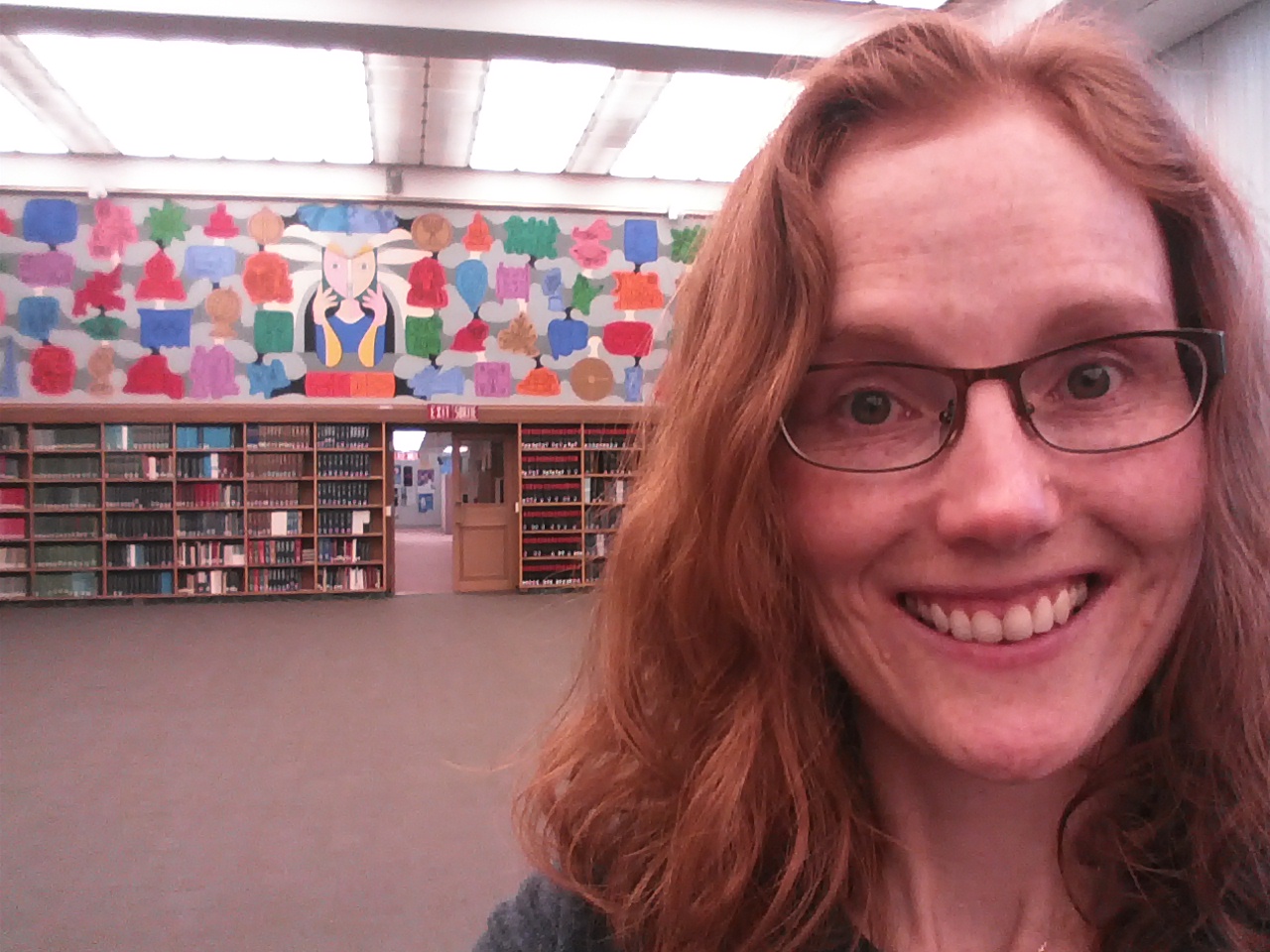 Claire Banton obtained her Masters of Library and Information Studies degree in 2006. She has worked in Reference Services at LAC for 10 years, where she has enjoyed learning something new every day. She is currently Chief, Orientation Services, where she works with an awesome team who help people search for information. She loves being an information detective and helping people overcome their research challenges.
Claire Banton obtained her Masters of Library and Information Studies degree in 2006. She has worked in Reference Services at LAC for 10 years, where she has enjoyed learning something new every day. She is currently Chief, Orientation Services, where she works with an awesome team who help people search for information. She loves being an information detective and helping people overcome their research challenges.
Claire’s tips for genealogy research with LAC:
LAC is very different from the average library. It is both a national library (search the library catalog here) and a a national archive (search the archival catalog here). You don’t have to have an account to search.
Start with the LAC website (genealogy resources page) whether you are visiting in person or not. There are loads of free databases and some unindexed digitized records. The Topics page will tell you what they do and don’t have.
There was no border control from the US to Canada prior to 1908, so there are no Canadian records of earlier crossings. [Tip: see border crossings to the US, 1895-1956 at FamilySearch.org and Ancestry.com.]
Call LAC directly for quick answers. Schedule a Skype call with a genealogy expert to get more in-depth answers: provide background information ahead of time.
Click here to explore (and join) Canada’s 150th birthday celebration.
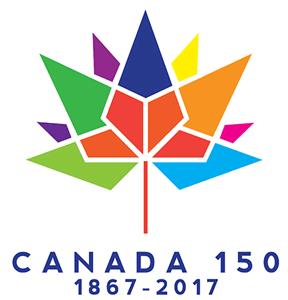
 GENEALOGY GEMS BOOK CLUB
GENEALOGY GEMS BOOK CLUB
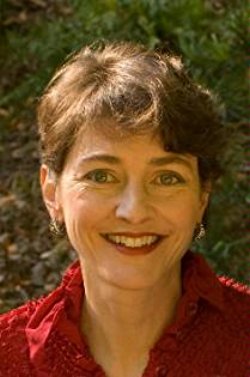
The Truth According to Us by internationally best-selling author Annie Barrows (co-author, The Guernsey Literary and Potato Peel Pie Society and author, Ivy and Bean, children’s book series)
It’s the summer of 1938, and wealthy young socialite Miss Layla Beck is now on the dole as a WPA worker, assigned to write a history of the small town of Macedonia, West Virginia. As she starts asking questions about the town’s past, she is drawn into the secrets of the family she’s staying with?and drawn to a certain handsome member of that family. She and two of those family members take turns narrating the story from different points of view, exploring the theme that historical truth, like beauty, is often in the eye of the beholder.
Click here to read an introduction to using WPA records for genealogy.
Click here to see more Genealogy Gems Book Club selections and how you can listen to Lisa’s upcoming exclusive conversation with author Annie Barrows about The Truth According to Us.
DNA WITH DIAHAN: DNA TESTING FOR KIDS?!
 I was talking with a fellow mom the other day about all the demands that are placed on kids’ time today. They have school and homework, many have after school sports and clubs, religious meetings, some have jobs or at least chores at home, not to mention all the time required to text, check social media, and hang out with friends. As parents and grandparents, we want our children to spend time on things that matter, things that will prepare them for their future lives and mold them into their future selves.
I was talking with a fellow mom the other day about all the demands that are placed on kids’ time today. They have school and homework, many have after school sports and clubs, religious meetings, some have jobs or at least chores at home, not to mention all the time required to text, check social media, and hang out with friends. As parents and grandparents, we want our children to spend time on things that matter, things that will prepare them for their future lives and mold them into their future selves.
According to a 2010 study out of Emory University, if we want to encourage kids toward an activity that will positively impact them, we should steer them toward family history. The researchers reported that “children who know stories about relatives who came before them show higher levels of emotional well-being.”
Now, I know I don’t need to convince you of this. You are already sold on genealogy. But I share this in the hope that it will push you over the edge and this will erase any hesitancy you have about sharing this love with your children and grandchildren.
Now, since you know this is me, the genetic genealogist talking, you can probably guess what I’ll suggest for getting kids interested in family history. DNA testing is a great way to personally and physically involve them. First of all, there is the tangible process of taking the sample at home, and the marvel at how such a simple act can produce the amazing display of our ethnicity results.
Since each of us is unique, it will be fun for them to compare with you and other relatives to see who got what bit of where. This will naturally lead to questions about which ancestor provided that bit of Italian or Irish, and wham! You’ll be right there to tell them about how their 5th great grandfather crossed the ocean with only the clothes on his back, determined to make a new start in a new land.
If there are parts of the ethnicity report that you can’t explain, use that as a hook to encourage them to start digging and to find out why you have that smattering of eastern European or south east Asian. Taking them for a tour of the DNA match page you can show them how they share 50% of their DNA with their sister (whether they like it or not!) and how they share 25% with you, their grandparent!
DNA test results give kids a totally unique look at their personal identity with technology that is cutting edge. Looking at their DNA test results can turn into a math lesson, a science lesson, a geography lesson, a lesson on heredity or biology, a discussion on identity?wherever you want to go with it! DNA is the perfect introduction to the wonders that genealogy can hold, especially for children who are so good at wondering.
Click here to learn more about Diahan’s series of how-to videos, available to Gems fans for a special price. Or start your DNA journey with the guide that will help you get started with kids’ genetic genealogy:
Autosomal DNA for the Genealogist
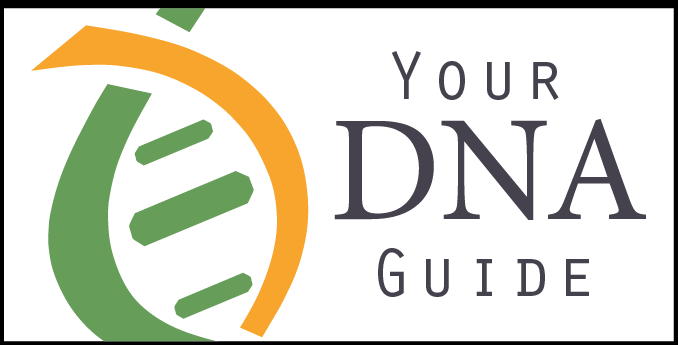
PROFILE AMERICA: ELLIS ISLAND
Click here to watch the official, award-winning documentary shown at Ellis Island free online at YouTube.
Lisa Louise Cooke, Host and Producer
Sunny Morton, Editor
Amie Tennant, Content Contributor
Diahan Southard, Your DNA Guide, Content Contributor
Lacey Cooke, Service Manager
Vienna Thomas, Associate Producer
Disclosure: This article contains affiliate links and Genealogy Gems will be compensated if you make a purchase after clicking on these links (at no additional cost to you). Thank you for supporting Genealogy Gems!
Questions Asked in the 1950 U.S. Census
What questions were asked in the 1950 census? In this week’s video I’ll explain what was asked, and how the answers given can help provide clues for additional research about your family. You’ll also learn what was not asked and which questions were asked for the first time in 1950. Then we’ll wrap up with my Genealogy Pro Tip for the 1950 Census.
Episode 53 Show Notes
We’re all looking forward to the 1950 census coming out in April 2022, followed soon after by the searchable index. But before we dig into it, it’s helpful to know what kinds of questions were asked and what kind of information you can expect to find about you, your parents, your grandparents or even your great grandparents.
If you haven’t watched it already, check out Elevenses with Lisa episode 51 for an overview of the 1950 census.
And I’ll have that video link for you again at the end of this video. And of course the best way to find your own genealogy gems is to follow my genealogy gems channel, so click the YouTube Subscribe button and that will toss me and this channel into your favorites list on YouTube for safe keeping and happy viewing for years to come.
The U.S. Federal Census is taken every 10 years here in the United States. Typically in genealogy we see more and more questions being asked each decade, which is awesome for us as family historians. But did you know that the 1950 population questionnaire actually asked FEWER questions than its predecessor in 1940.
Yep, according to the U.S. Census bureau, in 1940 every household was asked 34 questions. However, in 1950 they were asked just 20 questions. As we go through the questions I’ll let you know what’s the same, what unfortunately you will NOT being seeing, BUT also the few NEW questions that were asked.
Questions Asked on the 1950 U.S. Federal Census Questionnaire
The following questions were asked of everyone in the household.
1. Name of street, avenue or road where the household is located
2. Home or apartment number
3. Serial number of dwelling unit
4. Is this house on a farm (or ranch)?
5. If no, is this house on a place of three or more acres? (New question for 1950 thanks to the expansion of suburbia.)
6. Corresponding agriculture questionnaire number
7. Name
8. Relationship to head
9. Race
Census takers were instructed to assume that all members of the related household were the same race. For unrelated people they were to ask. And if you see a description you are unfamiliar with, consult the 1950 census enumerator instructions.)
10. Sex
11. How old was this person on his last birthday?
It was expected that there would be some folks who either didn’t know their exact age or didn’t care to share it. Census takers were instructed to try to zero in and get as accurate as possible. If age wasn’t known, they were instructed to enter an estimate as the very last resort, and footnote that it was an estimate.
12. Is this person now married, widowed, divorced, separated, or never married?
Marriage codes found in this column:
MAR = married
WD = widowed
D = divorced
SEP = separated
NEV = never married. People under the age of 14 were automatically labeled as never married. Also, common-law marriages were reported as Married, so while marital status can be an indicator to look for marriage records, it is possible that there may not be any.
13. What State or country was the person born in?
It’s important to note that if the baby was born in a hospital across the state line, they were reported as being born in the state where the family lived. This is important to keep in mind when hunting for birth certificates.
14. If foreign born, is the person naturalized?
This will be a yes or no. But if you see “AP” it means the person was born of American parents abroad or at sea. Also, if born at sea they were an American citizen if their father was, or if they were born after 5/24/1934 and either parent was American.
Before we get to the last six questions which were asked only of people 14 years of age and older, let’s take a look at the questions you might have expected to see that were asked in the previous 1940 census but were not.
Questions Not Asked in the 1950 Census that Were Asked in 1940
These questions include:
- Home owned (O) or rented (R)
- Value of home or monthly rental if rented
- Attended school or college at any time since March 1, 1940?
- Highest grade of school completed
- Residence, April 1, 1935
- City, town or village having 2,600 or more inhabitants. If less, enter “R”
- County
- State (or Territory or foreign country)
- Farm?
Questions Asked in the 1950 Census of People Over the Age of 14
You may be wondering why the last 6 questions of the 1950 census were only asked of people over the age of 14. It’s because these questions were about employment status. Not surprisingly, these questions vary a bit from what was asked about in employment in 1940, but they are pretty similar.
- What was this person doing most of last week – working, keeping house, or something else?
Employment Codes used in questions 15:
WK = working
H = keeping house
U = unable to work
OT = other
16. If the person was “keeping house” or “something else” in question 15, did the person do any work at all last week, not counting work around the house? (Including work-for-pay, in his own business, working on a farm or unpaid family work)
17. If the person answered “no” to question 16, was he looking for work?
18. If the person answered “no” to question 17, even if he didn’t work last week, does he have a job or business?
19. If the person was working, how many hours did he or she work in the last week?
20. What kind of work does the person do?
-
- What kind of business or industry is the person in?
- Class of worker the person is.
- Enumerators were to mark “P” for private employment, “G” for government employment, “O” for own business, or “NP” for working without pay
Here’s an example of an entry you might see for someone’s employment: Jewelry, Salesman, P. Armed forces was used for all types of military service.
The one glaring omission in 1950 is questions about whether the person worked for one of the government program such as the Works Progress Administration known as the WPA or The Civilian Conversation Corp known as the CCC. This actually makes sense because these employment programs were focused on helping the unemployed during the Depression. WWII had most Americans working and doing their part in some fashion creating low unemployment. Therefore, the WPA was ended in 1943.
Genealogy Clues in the 1950 Census
Let’s quickly recap what you will learn from the answers to the questions asked during the 1950 census that can help you learn more about your family history:
You’ll see the names of your relatives and ancestors, where they lived and the relationships within the family.
You’ll find out where they were living and get the actual address. You can then use this information to find old maps, search city directories and learn much more about their neighborhood and their lives.
If your relatives lived on a farm you’ve got another genealogy gem to find which is their listing in the Agricultural census. Remember the population enumeration, the one counting people, is just one of the enumerations that was conducted. The 1950 population enumeration will give you the number where you can locate them in the agricultural questionnaire.
You’re also going to learn your relative’s age which will get you even closer to determining their birthdate. This in turn will help you locate their birth records. You will also learn the state or country where they were born.
If they were foreign born you will find out if they were naturalized. It’s a little disappointing that it doesn’t tell us the year of immigration or naturalization. However, a “yes” in the “is the person naturalized” column does provide you with an excellent clue to go look for those naturalization records. Learn more about finding and using naturalization records for genealogy in my Family History: Genealogy Made Easy podcast:
Episode 29: Immigration and Naturalization Records for Family History, Part 1.
Genealogy lecturer and blogger Stephen Danko, PhD, begins a 3-part series on U.S. immigration and naturalization records. Learn about passenger arrival lists in the U.S., little-known certificates of arrival and naturalization records: how to find them and what’s in them.
Episode 30: Immigration and Naturalization Records for Family History, Part 2.
Stephen Danko continues this series by focusing on passenger departure records created in European ports. He also talks more in-depth about U.S. naturalization records.
Episode 31: Immigration and Naturalization Records for Family History, Part 3.
Stephen Danko talks in-depth about passenger list annotations and the immigrant’s experience at Ellis Island. You didn’t know what you were missing with those mysterious scribbles on 20th-century passenger manifests!
And finally, you’ll not only find out if they were married and if they had any previous marriages.
Lisa’s Pro Tip for the 1950 U.S. Census
After my first video on the 1950 census I got this question from Suzanne:
Will the 1950 census also have the children born to mother/children still living question?
The answer is, maybe.
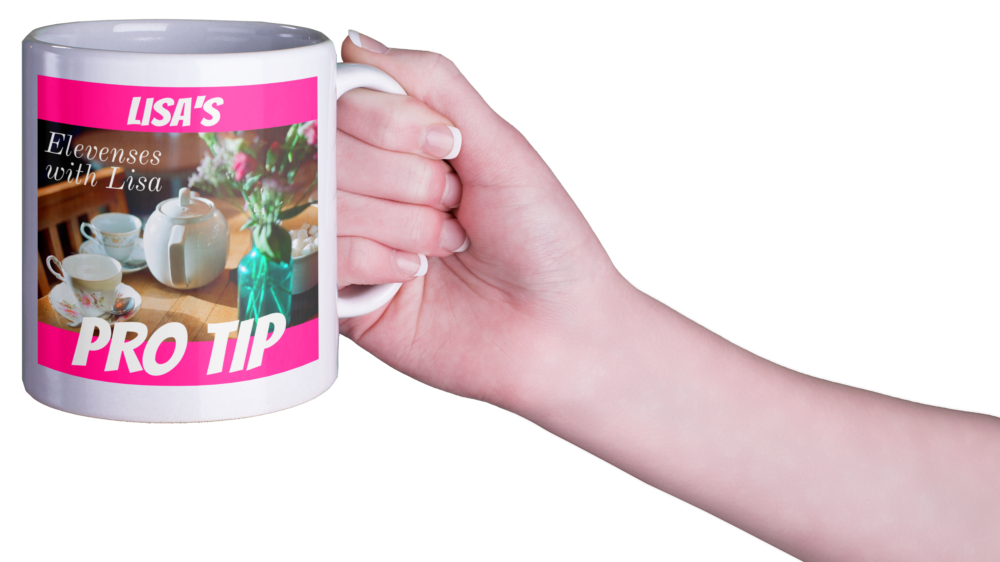
Pro Tip: Keep an eye out for additional questions.
As in 1940, 5 percent of the population were asked an additional slate of questions. This was to provide sample data about the population. One of those questions asked was “If female and ever married, how many children has she ever borne, not counting stillbirths?”
Supplemental Questions Asked in the 1950 Census
Here are the additional questions that were asked of just 5% of the population in the 1950 U.S. Federal Census. (Note: They were asked of all ages.)
21. Was the person living in the same house a year ago? If the answer was no, then…
22. If no to question 21, was the person living on a farm a year ago?
23. If no to question 21, was the person living in the same county a year ago?
24. If no to question 23…
-
- What county (or nearest place) was he living in a year ago?
- What state or foreign country was he living in a year ago?
25. What country were the person’s mother and father born in?
26. What is the highest grade of school that the person has attended?
-
- Enumerators were to mark “0” for no school; “K” for kindergarten; “S1” through “S12” depending on the last year of elementary or secondary school attended; “C1” through “C4” depending on the last year of undergraduate college education attended; or “C5” for any graduate or professional school.
27. Did the person finish this grade?
28. Has the person attended school since February 1st?
-
- Enumerators could check a box for “yes” or “no” for those under thirty; for those over thirty, they were to check a box for “30 or over.”
For members of the household who were 14 years and older, they also answered these questions centered around employment details, money, military service previous marriages and the question Suzanne is hoping to have answered – children born to women in the household.
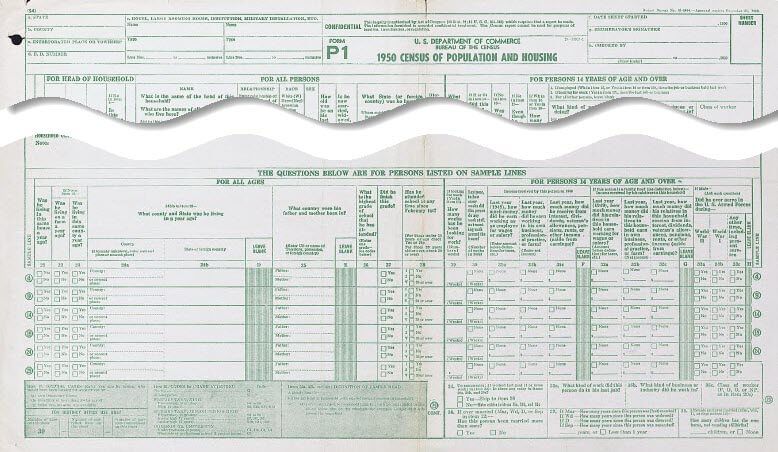
1950 census supplemental questions asked of 5% of the population.
29. If the person is looking for work, how many weeks has he been looking for work?
30. Last year, how many weeks did this person not work at all, not counting work around the house?
31. Last year, how much money did the person earn working as an employee for wages or salary?
32. Last year, how much money did the person earn working at his own business, professional occupation, or farm?
33. Last year, how much money did the person receive from interest, dividends, veteran’s allowances, pensions, rents, or other income (aside from earnings)?
34. If this person is the head of the household: last year, how much money did his relatives in this household earn working for wages or salary?
35. If this person is the head of the household: last year, how much money did the person earn working at his own business, professional occupation, or farm?
36. If this person is the head of the household: last year, how much money did the person receive from interest, dividends, veteran’s allowances, pensions, rents, or other income (aside from earnings)?
37. If male: did he ever serve in the U.S. Armed Forces during…
-
- World War II
- World War I
- Any other time, including present service
38. To enumerator: if the person worked in the last year, is there any entry in columns 20a, 20b, or 20c?
39. If yes, skip to question 36; if no, make entries for questions 35a, 35b, and 35c.
-
-
- What kind of work does this person do in his job?
- What kind or business or industry does this person work in?
- Class of worker
-
40. If ever married, has this person been married before?
41. If married, widowed, divorced, or separated, how many years since this event occurred?
42. If female and ever married, how many children has she ever borne, not counting stillbirths?
Free Download of the 1950 Census Form
You can download the 1950 U.S. Federal Census form from the Census Bureau website.
The 1950 U.S. Census – A Valuable Genealogical Record
So now you know all the details on what you can look forward to learning about in the 1950 census. If you would like to learn more about the 1950 census, watch The 1950 Census for Genealogy. You can watch the video and get the complete show notes here.

WATCH NEXT: episode 51 and get the show notes here.
Yakety Yak – Talk Back in the Comments
Elevenses with Lisa is a genealogy community, and discussion is a big part of the experience. In the Comments below please share on one of these topics:
- What question are you most looking forward to getting an answer to in the 1950 census?
- Who you’re hoping to find in the 1950 census?
- What question do you have for me about the 1950 census?
Resources – Get the Handout
- Bonus Download exclusively for Premium Members: Download the show notes handout. (Not a Premium Member? Become a Genealogy Gems Premium Member today.)
- Watch past free episodes of Elevenses with Lisa
- Get your official Elevenses with Lisa mug
- Subscribe for free to our Genealogy Gems YouTube channel so you’ll never miss another episode.
- Subscribe to my free email newsletter to get notifications.

